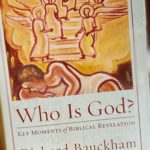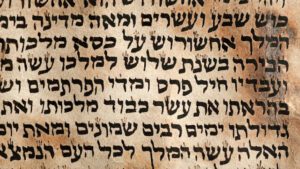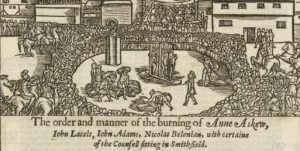The third instalment of Craig Hamilton’s four-part miniseries on the coming of Christ
Pretty much every Christmas in my social media feed there’s some article about how the Christmas story, the virgin birth, is just a rip-off of ancient pagan myths. It was kind-of-common in the ancient world for there to be stories and myths of, loosely defined, virgin births and divine-human sexual activity producing demi-gods or key spiritual or political heroes. The claim is then that the early Christians just made up the whole Virgin Mary thing, that there’s no historical basis and that it was just copy-and-pasted from some of these earlier legends. The next step in the logic is that since we can’t trust it then we can’t trust anything else about Jesus and perhaps even the Bible as a whole.
So let’s see for ourselves and make up our own minds. The myth that gets trotted out most often is the Egyptian god Horus. (He’s the one with the falcon head, in case you’re not fully up to date with your Egyptian pantheon.)
Horus and the Osiris myth
The part of the story of Horus that we’re interested in occurs as part of what is known as the Osiris myth. This Osiris myth is more precisely referred to as a “mythological constellation,”[1] a pulling together of various fragments of myth. The only texts that give us a coherent narrative are Greek texts written in the first and second centuries AD, the most complete of these ancient sources being Plutarch’s De Iside et Osiride (On Isis and Osiris). In this case, however, the myth seems to have undergone some embellishments and changes that aren’t reflected in the Egyptian traditions as they have come down to us through the passage of time. But the general outline of the myth is well known enough to recount.
So here’s the myth about the Horus and his virgin birth. See if you can spot the differences, because they might be fairly subtle.
Osiris ruled the land of Egypt but had a jealous brother, Seth, who tricked him and killed him. Seth threw Osiris’ coffin in the Nile where it was then lost out to sea. Isis, the sister and wife of Osiris, finds the coffin and brings it back to Egypt. When Seth hears about this, he steals the corpse of Osiris and chops it into 14 pieces and scatters them across the land. Isis goes and finds all the pieces and puts Osiris back together. The challenge is that she can’t find his … ahem … male piece—if you know what I mean—because it had been eaten by fish in the river.
Unperturbed by this setback, Isis makes a replica of the missing part and sews that on to the rest of the body. She is then able to revive her husband just long enough to mate with him (in the form of a bird) and have him sire their child Horus.”[2]
Spot the Differences
So, did you catch the differences? Yep, that’s right, pretty much everything is different. The first thing you might have noticed is that having sex with your husband, whether alive or dismembered and reconstituted, and using your magic to get impregnated isn’t quite the same as being a virgin.
It’s a very long bow to draw to suggest that this myth is the basis for the virgin birth narratives we find in the Gospels of Matthew and Luke.
No matter how you want to slice it, this event is no “virgin conception.” It’s a very long bow to draw to suggest that this myth is the basis for the virgin birth narratives we find in the Gospels of Matthew and Luke. Even if we take the earlier, Middle Kingdom version of the myth as “more reliable” (although that’s not quite how these myths work) where Isis is impregnated with the seed of her husband Osiris by being struck by a lightning bolt, it is still so different from the biblical accounts that any suggestion of influence, let alone reliance, is highly unlikely.
While this Horus myth, and there are many other supposed examples, might be an example of a miraculous birth it’s not even a virgin birth, let alone there being any indication that the biblical authors relied on these miraculous birth stories when crafting their own narratives. Instead, the biblical birth accounts are saturated not in Greco-Roman or Egyptian categories, but in Old Testament Jewish themes and characteristics. Both wider history and the world of pagan myth have accounts of supernatural, miraculous births of significant people up to the eyeballs, no question. But analogy does not mean genealogy. Just because they are vaguely similar doesn’t tell us anything as to whether one is copying the other or whether they are just similar, though independent. And it certainly tells us nothing about whether one is a cut-and-paste rip-off of another.
If anything, this abundance of “supernatural conception” stories serves to highlight, not the similarities, but the vast dissimilarities that exist between them and the gospel accounts.
In the end we have to say that Matthew and Luke, intended to record that God made Mary to become pregnant with Jesus, and did so by a miracle through the Holy Spirit. There’s no shift in style or tone between these accounts and the rest of the Gospels that contain them, and so there’s no reason to think that Matthew and Luke believed them to be in any way mythical. If you can trust their testimony at the point of the death and resurrection of Jesus, there seems to be no reason to be skeptical at this point. With no evidence for any extraordinary suspicion on the matter, and if you already believe in a God who made literally everything out of literally nothing, who can create 5,000 men’s worth of bread and fish out of almost nothing, and can raise a dead man back to life, creating a cell or two out of nothing inside an already existing womb doesn’t seem particularly difficult.
See more on the Incarnation in Craig Hamilton’s recent book Made Man
[1] Gods and Men in Egypt: 3000 BCE to 395 CE, Francoise Dunland & Christiane Zivie-Coche, tr. David Lorton, Cornell University Press, 1994, p. 39
[2] The Complete Gods and Goddesses of Ancient Egypt, Thames and Hudson, 2017, p. 146; Gods and Men in Egypt: 3000 BCE to 395 CE, Francoise Dunland & Christiane Zivie-Coche, tr. David Lorton, Cornell University Press, 1994, p. 39















